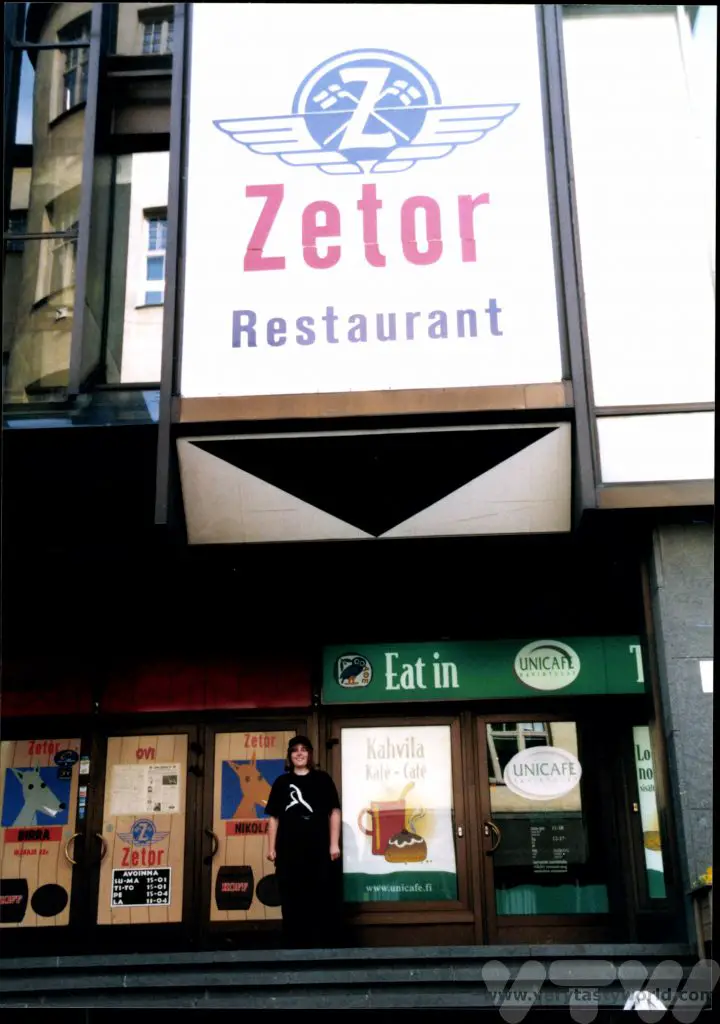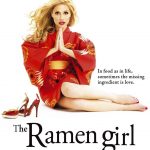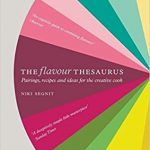Home » Media
Category Archives: Media
The Makanai: Cooking for the Maiko House
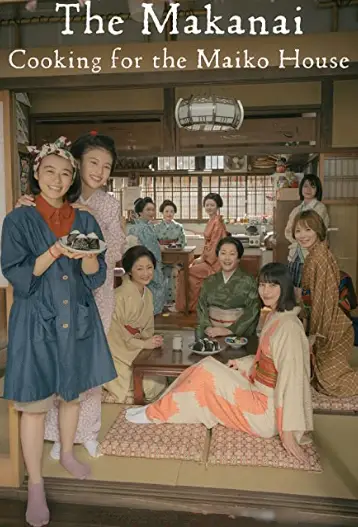
Director: Koreeda Hirokazu(是枝 裕和)
From the manga by Aiko Koyama
Starring: Nana Mori,Natsuki Deguchi,Aju Makita
Cuisine: Japanese
Country (of film origin): Japan
TV Rating: 9/10
Foodie Rating: 9/10
Review: Cuisine and culture combine in an emotional and educational entertainment about Kyoto life, friends, futures and food.
There’s a line in anarchic 80s British TV show The Young Ones when punk student Vivyan, talking about a TV show, yells, “It’s so bloody nice!” Whereas his character despised feelgood TV, you just can’t help falling for the voie de vivre while watching The Makanai, a charming and quite delightful Netflix series. Based on the manga Kiyo in Kyoto: From the Maiko House by Aiko Koyama, the teleplay is written and partly directed by Koreeda Hirokazu, whose Palm d’Or winning film Shoplifters ( 2018) takes a very different perspective on food and society.
Kiyo Nozuki (Nana Mori) and Sumire Herai (Natsuki Deguchi) are two best friends from Aomori prefecture who leave the cold northern region of Japan to become maiko in Kyoto. Maiko are apprentice geiko (the Kyoto term for geisha) and the sixteen year olds will join the Saka establishment and train in the arts of traditional singing and dancing. This is a whole new world for the pair as they need to learn the etiquette and the correct way to address their superiors and other maiko in their house – the geiko are ‘mother’ and their maiko companions are referred to as ‘sister’. It’s hard work and the daily routines preparing for the coveted roles are tough as they train and practice new skills.
In fact, it’s so tough that Kiyo just can not meet the requirements of the training and the mothers sadly inform her that she will not become a maiko. However, they recognise that she is a hard worker and a great cook, so Kiyo stays in the maiko house to become a worthwhile addition to the business as a makanai. It is her job to purchase all the food and prepare delicious meals for the household. So she dedicates herself to getting up early in the morning to embark on shopping trips to familiarise herself with market vendors so that she can obtain the necessary ingredients.
It is fortunate that her grandmother taught her to cook because the plethora of delicious dishes that Kiyo can produce is awesome in its variety and each meal looks utterly delicious. Fortunate for foodie viewers the creation of these dishes is shown in vignettes which will not only have your mouth watering, they will provide lots of inspiration for future recipes.
And so we follow Sumire’s journey as she becomes a talented apprentice with huge potential to progress to becoming a respected maiko and Kiyo, who could have been immensely jealous of her friend’s success, is unwaveringly supportive and genuinely happy in her new role.
Traditional events, integral to Kyoto culture and cuisine, are depicted through the whole series. Perhaps the most significant event occurs in episode seven by which time Kiyo is fully established as the makanai. The geiko and maiko ladies start the new year by attending a formal ceremony. But Sumire falls ill and loses her appetite, and it is down to Kiyo to cook up some comfort food. She is advised to produce a traditional Kyoto based remedy – udon noodles in broth – which requires distinct ingredients and implementation that the exceptional cook must learn to create.
Her regular market proprietors advise on the best venues in obscure parts of town to get the required ingredients to make an exemplary dashi (broth). A prodigious bonito flake creator marks the beginning of her quest and an exemplary kombu (kelp) nori (seaweed) producer introduces her to perfectly dried sheets of seaweed. This is as much a learning experience for the viewer as it is for our protagonist, although we can but dream of such delicacies.
The Makanai: Cooking for the Maiko House is a series unlike anything you have ever seen before. It is so full of companionship and understanding you genuinely take delight in the niceness portrayed; it’s as sweet as some of the immaculate desserts that Kiyo creates. When a series makes you want to have a delicately shaped egg sandwich and deep fry the crusts for an additional snacky surprise you know you have seen something different and delightful.
This is also a show about food and cookery in that the creation of the meals are an important element the story. And therein lies the show’s only real problem – you want there to be an ingredients list before each episode so you can make the dish afterwards. We’re definitely going to try some of the goodies that the maiko enjoyed. Be warned though – make sure you eat before watching or face inevitable pangs of hunger…
Related Posts You May Enjoy
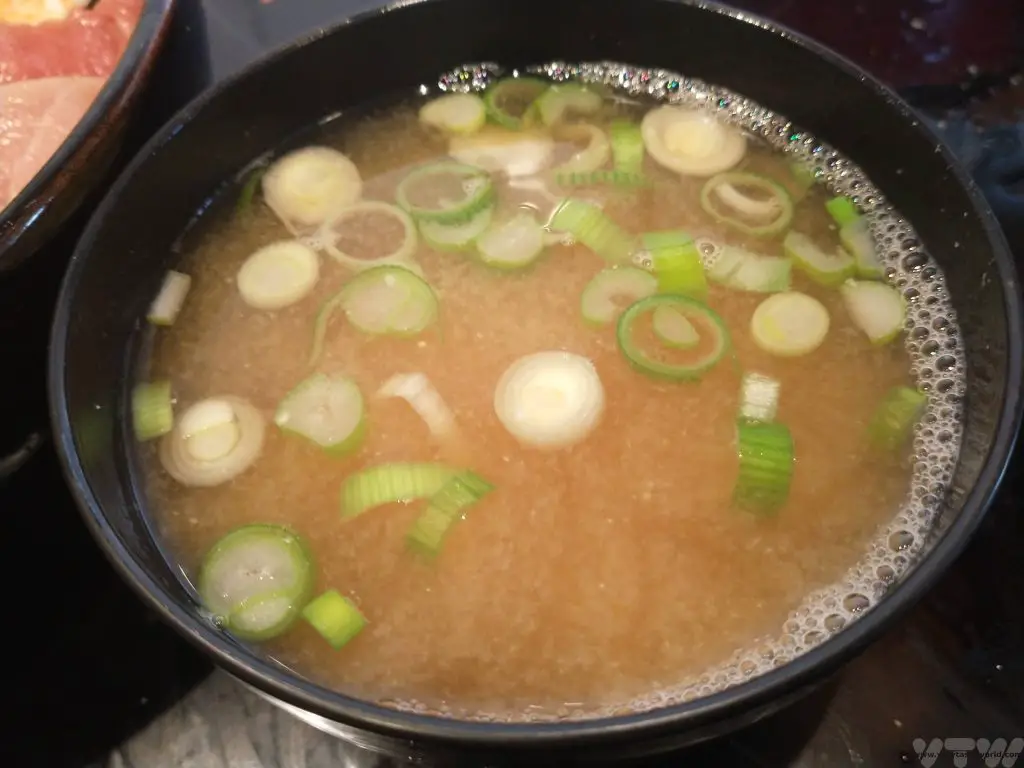
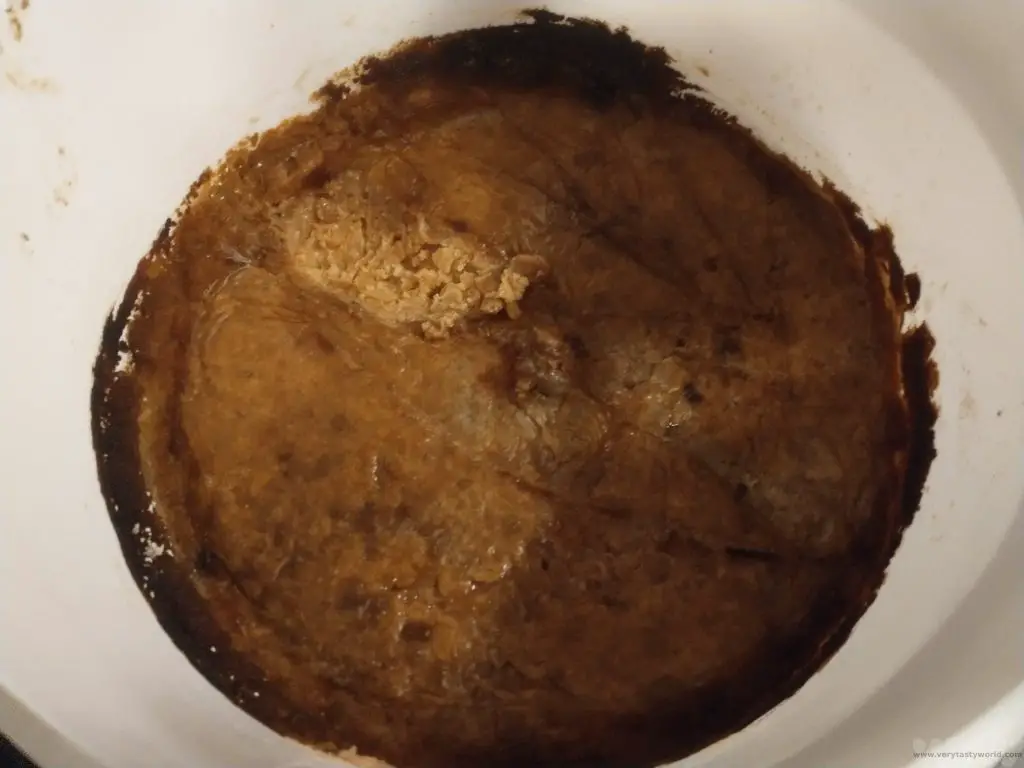

- The Makanai: Cooking for the Maiko House
- Film Review: Bao (2018)
- Film Review: Jadoo (Kings of Curry 2013)
- Film Review: Ramen Girl (2008)
- Film Review: Nina’s Heavenly Delights (2006)
- Film Review: Chocolat (2000)

- RECIPE Oyakodon Donburi
- Zero Waste Recipes Before Your Holiday
- RECIPE: Vegetable Biryani Tamil Nadu Style
- RECIPE: Vegan Wild Garlic Pesto
- Recipe: Venetian Pasta Sauce
- RECIPE: Biryani Raita Recipe
- RECIPE: How to Make Costa Rica’s Gallo Pinto
- Recipe: Japanese Simmered Pork Belly – Buta no Kakuni
- RECIPE: How to Make Umeboshi
Film Review: Bao (2018)

Short and sweet, or perhaps that should be short and savoury, Bao is a food fantasy film that is imaginative, emotional and a sheer delight which also gives you change from ten minutes despite showing conception, birth, growing up and falling in love in its modest running time. This is Pixar at its best, one of those short films that often appear before the main feature film that is a way of exploring new ideas and giving new writer /directors an opportunity to showcase their (often first) projects. Bao was originally shown before The Incredibles 2 (by Brad Bird, director of the Pixar foodie feature film Ratatouille). Domee Shi’s debut delight paid dividends, resulting in an Oscar and the ability to write and direct a feature – Turning Red (2022). Bao is about family and food, the titular character a Baozi (包子 steamed bun) created by Mom (Sindy Lau).
Mom is a special kind of cook. You can tell this from the very opening of the film which is virtually photorealistic in its depiction of bun-making that leads the viewer to wish to repeat the culinary skills first-hand from the hands of a traditional cook. But Mom can bring her food to life like no other chef, not even you wishing you could repeat her traditional dumpling-making skills in your own home. Her food comes literally to life. Whilst creating Baozi for her and her husband (Tim Zhang) to enjoy she becomes surprised that one of the Baozi features childlike features and begins to try and speak. She raises the boy bun as their treasured child, seeing him through school and into adolescence despite being a touch overprotective. But as Mom’s offspring develops he turns into a stroppy teenager, finds romance and gets a fiancée. Will the thought of having her boy bun leave home give her bitter thoughts and regrets that may consume her?
Tactile CGI rendered animation makes the characters look more like claymation and therefore resemble more realistically the dumplings kneaded into life by Mom. Even the characters look like rice-flour dough to add to the whole foody feel of the piece. If there is one issue with the film it is that you want the recipe and cooking techniques to try at home (without the creation of new life you would hope!) This is an utterly delightful food film that is an odd but emotional fantasy comedy suitable for all ages and all appetites.
And there really is no excuse not to watch it as (at the time of posting) it is available to watch on-line here (via youtube)

The Life And Cuisine of Elvis Presley
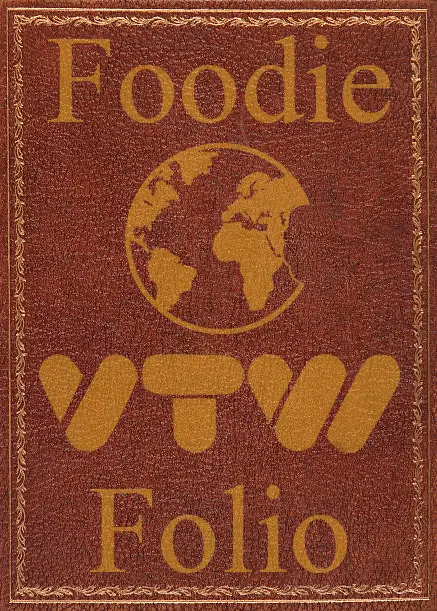
Author David Adler
Publisher Three Rivers Press
ISBN-10: 0517880245
ISBN-13: 978-0517880241
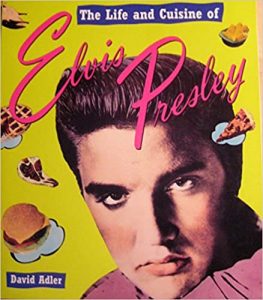
The Life and Cuisine of Elvis Presley is a book about the food that made The King. It doesn’t try to hound (dog) you into trying all of the recipes (wise men say only fools rush in, but we can’t help falling for much of the cuisine on offer) but this is, nevertheless, a compelling read that links the life of Elvis Presley with the food that he consumed.
The book starts earlier than you might expect, opening by discussing the dishes that his mother Gladys would have eaten, connecting her diet with the availability of food and Tupelo society at the time, providing a useful context for the rest of the book. It then goes on to discuss the school dinners the young Elvis ate and the 1950’s diner years – indeed it covers all aspects of food from throughout his life, from his years in the army, eating with the other soldiers in the mess, and the celluloid culinary choices of a Hollywood star to lunching in Las Vegas.
But the book doesn’t just deal with the social context it also covers the fluctuation between the habits and culinary needs of Elvis himself, from snacking to dieting (the helpfully titled “Love Me Slender” chapter). And here lies much of the interest beyond the man himself, because you get an in-depth look at southern state food and culture, notably in the “Bible Belt Brunch” page that has two dishes, the 7-Up Salad, which seems light on the salad (the nearest vegetable-related ingredient is a crushed pineapple) but high on 7-Up and gelatine, with added green colouring should you like, and the “magnificent Southern delicacy” Chess Pie. This super sweet pie dessert sounds like an incredibly sugary treat, although you’d probably only be able to manage ‘Just A Little Bit’. Further cakes and pies are available including a guide to making the wedding cake produced for Elvis and Priscilla. The recipe comes straight from the source at the Aladdin Hotel so you can create your own version of the real thing should a happy day arrive for you or a friend/relative.
There are a substantial amount of recipes on offer here, varying in ingredients, creation and calories. And these are often variations on classic or regional dishes (Miss Vertie’s Sweet Potato Pie and her Corn Bread) to the unique aspects of Elvis’s dietary oddities in the Graceland years including the legendary Fool’s Gold Loaf (‘Fools Rush In Where Angels Fear to Tread’), his favourite pizza (Coletta’s Barbecue Pizza) and his culinary invention, the simple and tasty Peanut Butter & Cheese Sandwich (a variant on an old roadhouse favourite of his younger years, the Fried Peanut Butter and Banana Sandwich, but easier to make at home). There is even a useful shopping list should you wish to attempt to cook the recipes provided – but presumably ‘It’s Impossible’ to obtain the variety of cigars in the shopping list these days.
The helpfully detailed and nicely laid out recipe guides add to this a very interesting biographical cookbook. Once read it will be ‘Always On Your Mind’.
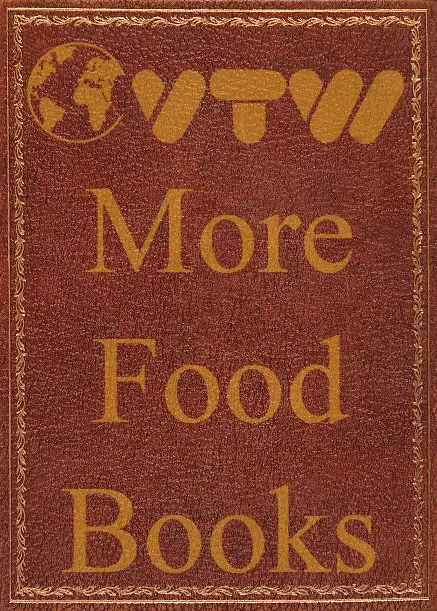
Film Review: Jadoo (Kings of Curry 2013)

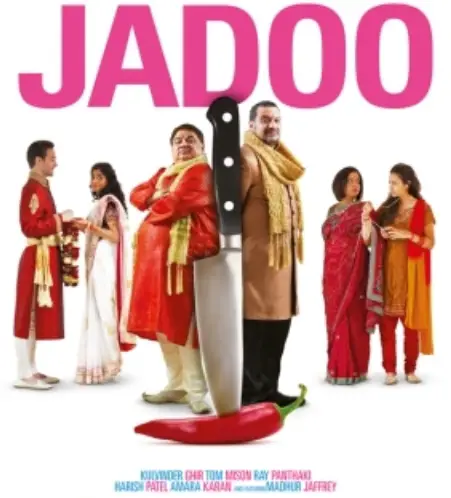
Director /screenplay : Amit Gupta
Foodie Expert Madhur Jaffrey
Country: UK
Film Rating: 6/10
Foodie Rating: 8/10
Without the risk of trying to curry favour this is a delightfully enjoyable foodie rom-com. Set in the UK city of Leicester cross-cultural expectations collide with family conflicts and culinary rivalries at the height of the festival of Holi, so colourful confrontations ensue in more ways than one.
Mark (Tom Mison) and Shalini (Amara Karan) want to get married but Shalini is worried about getting approval from her father, especially as they come from different cultural backgrounds. Shalini heads back home to Leicester to inform her dad Raja (Harish Patel) of the proposed nuptials. No need to worry. Her father is delighted.
The only problem is that she would like to invite her uncle to the wedding. And her father hasn’t spoken to his brother for a long, long time. Raja and Jagi (Kulvinder Ghir) are rival brothers with rival restaurants, their sibling squabbles revolving around an argument that resulted in the splitting of their late mother’s recipe book twenty years ago. And there seems to be no possibility of reconciliation.
Just after the colourful festival of Holi, a high-profile curry cooking competition is due to take place. It is hosted and judged by Indian culinary expert and actress Madhur Jaffrey. To be crowned King of Curry in this contest the winning team must provide the best starter and main-course combination.
One of the brothers is a regal starter genius whilst the other is a main course diva. Will family feuding decide to join forces not only for premium King of Curry success? And will Shalini mange to persuade her uncle to resolve their differences and prepare the perfect wedding banquet for her and her spice-savouring spouse to be?
Leicester, as well as being famous as the city where the remains of King Richard III were found in a car park, is one of the best places to eat Indian cuisine in the country. Of course, there is plenty of food on offer in this film with much of its preparation on show too.
And while the competition is the catalyst for reconciliation, the love lies with the preparation of the meals, demonstrating the importance of food in family life. Rather like in Ang Lee’s Eat Drink Man Woman when the father cooks food for his daughter and she appraises it like a critic.
Jadoo also highlights some of the cultural elements of the local community particularly a sequence featuring Holi, the fabulous Hindu festival of colour. Overall it’s a sweet family drama featuring some mouth-watering curried concoctions.
You can buy the film here.
If you click the link and decide to make a purchase we will earn a small commission, at no cost to you, which helps towards running this site.

Film Review: Ramen Girl (2008)

Director: Robert Allan Ackerman
Food Type: Ramen (if you couldn’t guess)
Country: US/Japan
Film Rating: 6/10
Foodie rating: 8/10
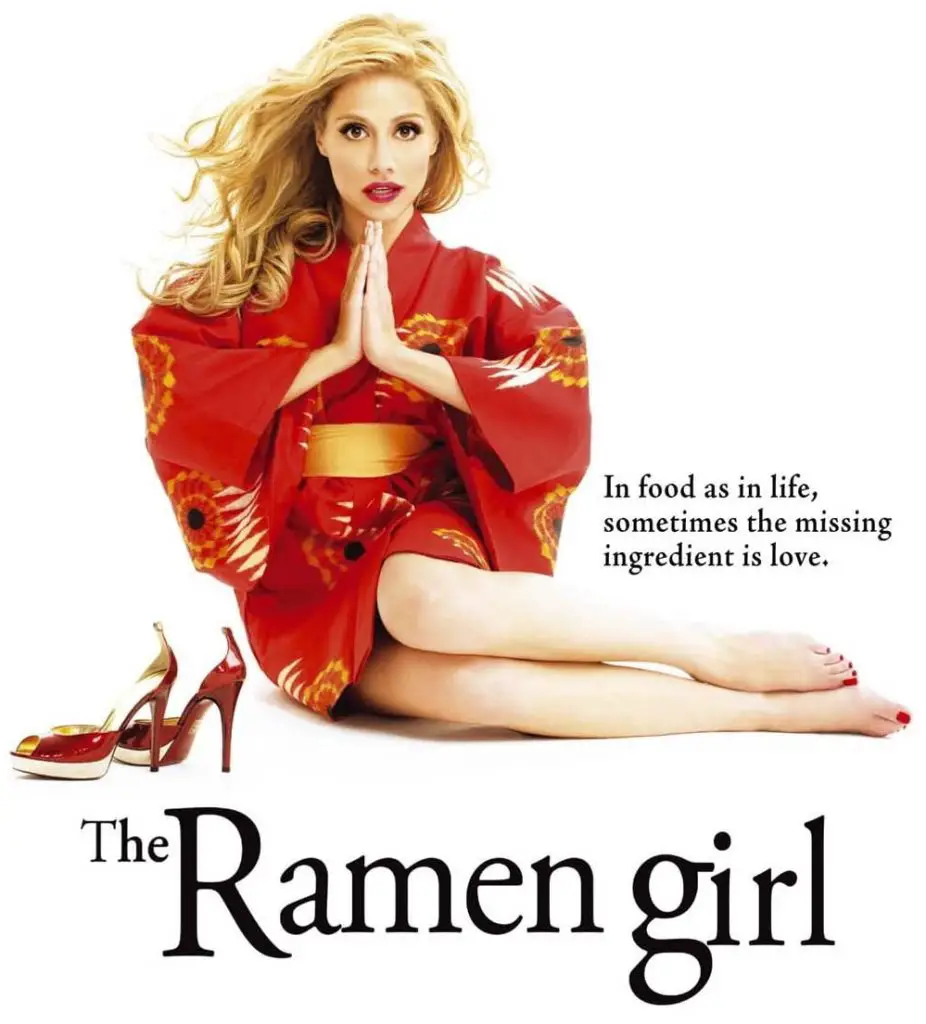
The subgenre of ramen based foodie films came to its apotheosis with the noodle nirvana of Tampopo (1985). Here the Japanese pasta sub-subgenre gets an American twist with The Ramen Girl, a learn-to-cook Japanese foodie film set in Japan and, surprisingly for a Hollywood film, it has a significant amount of (helpfully subtitled) dialogue in Japanese. It is also a romantic comedy, albeit one centred on food and culture; so more a ramen-tic comedy.
Abby (Brittany Murphy) has travelled to Tokyo to be with her boyfriend Ethan (Gabriel Mann). But it seems that he couldn’t care less, taking a job in China at the first opportunity, he leaves her alone in his half empty apartment. Weeping with sadness at her situation she enters the eatery across the road, which is right in the middle of closing for the night, bawling her eyes out. Bemused by the distraught foreign girl in their midst, the owner and his wife give her some of the remaining ramen to see if it will assuage her misery and persuade her to leave so that they can go to bed. Abby devours the ramen and quaffs the broth and, in doing so, becomes intoxicated by the ramen experience. She comes up with an obsessive idea – to learn to cook ramen. So she seeks lessons from chef and owner Maezumi (Toshiyuki Nishida). But this is not a simple student and mentor situation as Maezumi is a tough employer who gets her to engage in tasks such as cleaning the bathroom rather than cooking. It is not aided by the fact that even though the establishment’s sign marks it as a soba restaurant (そば蕎麦 – buckwheat noodles) its unhappy proprietor is regularly anything but sober. But Abby pursues her new career by persevering. She does manage to develop a social life and find new friends when she visits a club in Roppongi where she re-meets a bunch of western acquaintances, including Gretchan (Tammy Blanchard) and they get talking to Japanese salaryman Toshi Iwamoto (Soji Arai), who seems to be a bit more coherent than his associates. Abby and Toshi start dating and so her relationship blossoms alongside her ramen tuition. But then her progress comes to a frightening prospect when she learns that, “The master’s coming in two months.” This renowned ramen critic’s evaluation could result in laudation or humiliation. Maezumi is surprisingly optimistic about Abby’s chances and establishes a wager with a rival ramen proprietor which could lead to major consequences for both Abby and his well-established business. He even takes Abby to visit his mother who reveals her own profound ramen philosophies. What holds for Abby, and indeed Maezumi, in the future?
The Ramen Girl is a mixed bowl of ramen and broth that is distinct in its exploration of cross-cultural misunderstandings and the humour or challenges that result. The main characters have rounded back stories but ultimately the food is the driver to the events in this film. Learning ramen from a sensei seems to be a similar process to learning kung-fu from a sifu. There are difficult, strenuous, apparently mundane tasks that go on for an age before actual understanding the required skills to implement the technique that the master is teaching. These are important to Abby’s understanding even as they are apparently futile.
The competitive nature of developing cookery skills for a discerning master is a theme in many cooking films such as Jadoo-Kings of Curry, King of Cooking, Nina’s Heavenly Delights, and Eat Drink Man Woman. Here, the emphasis lies with the broth, its creation and its flavour, not to mention the side effects on the palette and spiritual/emotional response of consuming the concoction, is central to this film’s (very discrete) philosophical assertions. Early on we see how Maezumi’s creations can, in the right circumstances, create impulsive mirth and happiness in his clients as Abby declares, “I wanna make people happy the way you do.”
The food in the film is 95% ramen based but there is a notable exception where cross-cultural cuisine is the focus of one delightful scene. It’s Christmas and Abby, wearing an elf hat and having had her attempts to decorate the restaurant savagely mocked by Maezumi, has returned to her flat where Gretchan has moved in. The pair celebrate with a drink and a KFC Bargain Bucket, a familiar food take away for an American but KFC is also the Christmas meal that one eats in Japan. The romance of the film is definitely ramen-based, however, when Toshi takes Abby on a date to visit the Shinyokohama Raumen Museum, foodie heaven, which also offers a historic depiction of ramen throughout the years as well as the flavours of broth throughout the regions of Japan – with the inevitable consequences of a bloated but happy stomach.
The Ramen Girl is a mixed concoction of East meets West which, whilst not departing from genre expectations, at least blends them together in a different way that is sweet and fun. Not haute cuisine but satisfactory for when you feel peckish.
You can buy the DVD of The Ramen Girl in the UK or the US.
If you click the link and decide to make a purchase we will earn a small commission, at no cost to you, which helps towards running this site.

Film Review: Nina’s Heavenly Delights (2006)

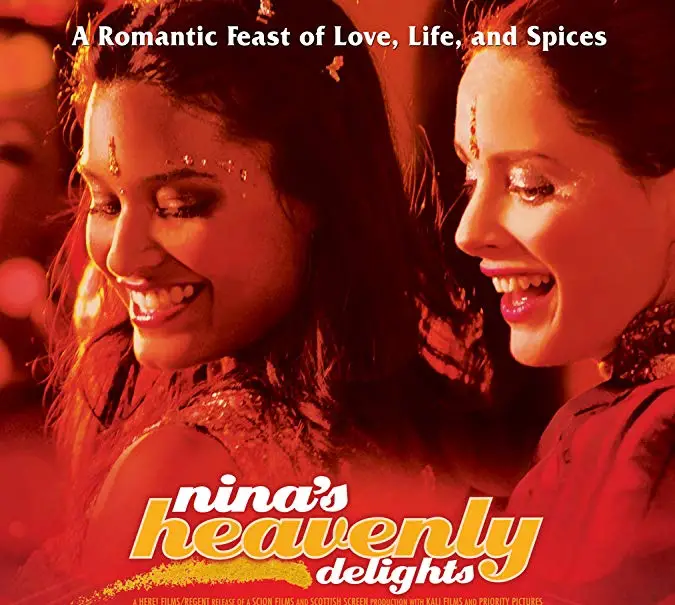
Writer/Director: Pratibha Parmar
Country: UK
Cuisine: Indian set in Scotland
Film Rating 8/10
Foodie Rating 8/10
“Taste is in your heart. Always follow your heart.”
Culinary pleasure mixes with romantic pleasure in Nina’s Heavenly Delights, the title of which prefectly reflects its tone and theme.
Nina Shah (Shelley Conn) is coming home to Glasgow after three years having departed in circumstances that left her estranged from her family. But her beloved, enthusiastic and talented father has recently passed away and she has returned to attend his funeral. He was the head chef and owner of the family’s highly regarded restaurant The New Raj. It was highly regarded due to her father’s culinary prowess but unfortunately he wasn’t financially successful so the family find themselves having to deal with a severe case of austerity and crippling debt. Rival restaurant Jewel In The Crown have the finances to match their bourgeois appearance and clientele and, what’s more, they wish to buy out The New Raj. Nina is more than perturbed by that prospect, instead pledging to honour her father’s legacy by maintaining the premises, keeping the restaurant running and, more importantly, winning a substantial cash prize in a well-respected curry cooking competition. She is convinced that his superior recipes for amazing Indian cuisine will win the competition and solve the family’s debt problem. But, of course, there are a number of rival curry chefs, including the decadent and narcissistic chef of The Jewel In The Crown, Sanjay, who was meant to be Nina’s spouse, much to her chagrin. Instead she finds assistance – and romantic entanglement – with the delightful and talented Lisa MacKinlay (Laura Fraser), an old friend who now owns half of the restaurant. Together they master the details of this complex culinary artform and develop their understanding of taste. But there’s more than just the competition to be concerned about because how will family and the wider society accept romance in her life when they come from separate cultures?
“No sale ’til after the competition,” reflects Nina’s personal desire to make this grand plan work – before she discovers that it will become inextricably linked with her romantic one. This is a very much a masala movie with a blend of tasty spices to whet your appetite – it combines comedy and confrontation, romance and remorse, song and dance, cooking and eating as well some social commentary about the family retaining Indian cultural traditions within the context of living in Scotland.
Bollywood cinema is known for its exuberance and, in many ways, the themes in this film are straight from Bollywood – the initially hidden, often unexpected romances, as well as disagreements between the protagonists about how to resolve their issues within the context of social demands and family issues. Conflicts and love are narrative essentials, as are costume changes, songs and dance. Nina’s Heavenly Delights has all of these, and there’s even a reference to Bollywood in a video shop that has a poster of the classic Mother India just to emphasise the point. But, for all its charming twist on Bollywood conventions, Nina’s Heavenly Delights embraces East meets West in ways beyond the love of its two leads in its Glasgow setting. More Indian foody films are available including Jadoo Kings of Curry and Gurinder Chadha’s Bhaji on the Beach (1993), The Mistress of Spices (2005) and What’s Cooking? (2000) as well as many others.
As writer/director Pratibha Parmar said,”I wanted to write a love story where a young woman falls in love with another woman in a surprising way, when they least expect it. I wanted to set it in an Indian restaurant …”. This whole scenario takes the film to many lovely levels: what is better than food and love? Nina’s Heavenly Delights is, as its title suggests, heavenly and delightful. Low in budget but high on taste it’s a foodie romance that appeals to the romantic and, of course foodies everywhere.
You can buy the DVD here.
If you click the link and decide to make a purchase we will earn a small commission, at no cost to you, which helps towards running this site.

Film Review: Chocolat (2000)

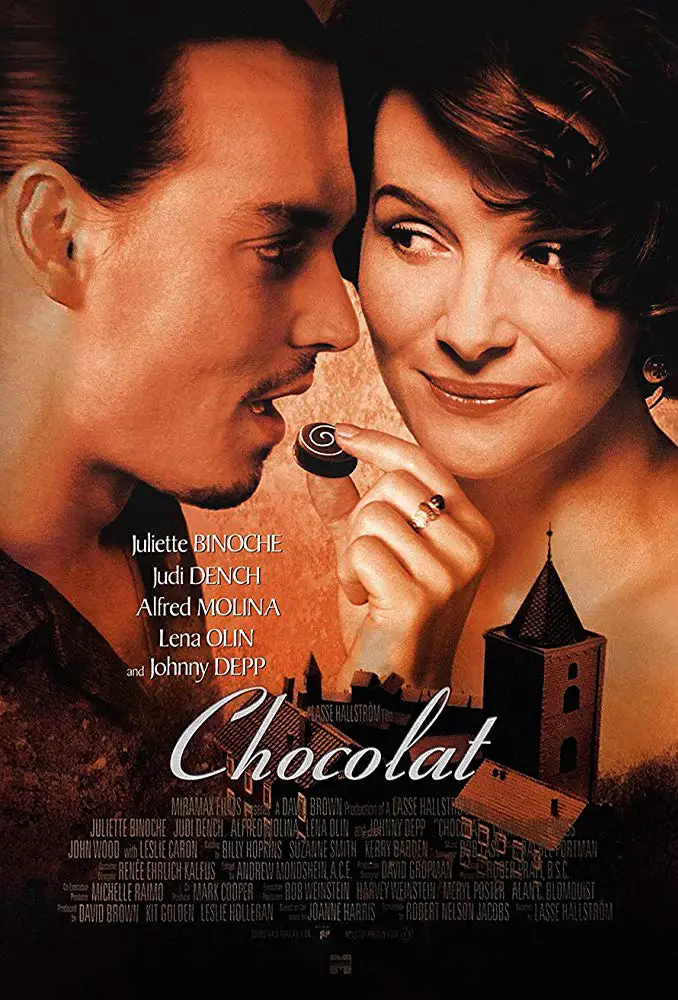
Director : Lasse Hallström
Writers: Joanne Harris (novel)
Country: UK/US (Film is set in France)
Food Consultant: Walter Bienz (chocolate expert)
Film Rating: 8/10
Foodie Rating: 8/10
Cocoa-based joy lies at the heart of Lasse Hallström’s romantic drama set in 1950’s France. First a word of warning. Note the lack of ‘e’ in the title. If you get Prachya Pinkaew’s 2008 film Chocolate you may well be in for a shock if you were expecting some sort of Milkybar huggy romance film. Instead you would see a remarkable, exciting and somewhat violent Thai martial-arts film (which is highly recommended if you like remarkable, exciting and somewhat violent Thai martial-arts films) rather than the rather more sedate environment of period piece Chocolat, a film about religion, society, families, romance and, of course, chocolate.
It’s 1959. Vianne Rocher (Juliette Binoche) and her daughter Anouk (Victoire Thivisol) arrive at a small village, seeking accommodation and business premises. They find a useful property which suits their purposes in a tranquil location in France. Vianne’s skill – indeed her destiny – lies with her ability to be an inventive and perceptive chocolatier who can accurately detect the particular desires of any potential customer. Furthermore, she is a compassionate and caring person who utilises her distinct culinary abilities to absolve people of social or psychological issues even if they were unaware of those problems themselves.
But the apparent idyll of the delightful location has some problems. Vianne arrives during Lent and the village’s dictatorial mayor Comte de Reynaud (Alfred Molina) has a strong interpretation of biblical edicts and insists on his parishioners steadfastly following the rules of fasting and avoiding the temptations of glorious gluttony. He even alters the parish priest’s sermons to dictate his own religious views. Vianne carries on regardless, determined by her destiny to aid the villagers with their personal problems through the medium of chocolate; these include family conflicts, a housewife being beaten by her drunken husband and her curmudgeonly and melancholy landlady, a grandmother denied access to her artistic grandson because she fell out with her daughter, a lady who subscribes to the mayor’s dominant beliefs. When a group of river Roma arrive at the outskirts of the village this creates further tensions particularly when Vianne forms a friendship with the anti-establishment but delightful guitar playing Roux (Johnny Depp). Naturally the authoritarian Comte de Reynaud sees this as a further plot to undermine his idealistic perceptions of virtue for the village and seeks to remove both the Roma and the chocolatier. But perhaps his own sins are to become apparent especially, it seems, when chocolate is involved.
There is so much to enjoy in the food depiction in the film from its creation to its final instigation. Vianne instigates her skills in multiple ways to accentuate her art and administer the correct form of chocolate for her many customers. So there’s chilli in the hot-chocolate concoction that has exceptional taste and a variety of aphrodisiac sweets, mood enhancers and delicately modelled confections that serve as an advert for her artistry as much as they emphasise the visual delights of her amazing products. Chocolate may be considered to be an indulgent food but here it is used to heal lost souls. There are a few moments of culinary horror amidst the joy of chocolate as we experience a scene of outrageous gorging – during Lent! – which forms part of the dénouement in the film’s relationship between mayor and chocolatier. And there is more trouble when in a moment of conflicting interests between mother and daughter concerning their respective futures when a valuable container of cacao is smashed, the dust powder scattered amidst the shattered pottery.
Johnny Depp return to confection as the chocolatier Willy Wonka in Charlie and the Chocolate Factory, but Juliette Binoche’s Vianne provides gastronomic supremacy way ahead of Tim Burton’s fantasy chocolate intermixture.
A delightful story about families, food, human frailties and redemption, Chocolat is a joy for both foodies and hopeless romantics.
You can buy the film here or the book here in the UK or the film here and the book here in the US.
If you click the link and decide to make a purchase we will earn a small commission, at no cost to you, which helps towards running this site.

Damn Fine Cherry Pie – Recipes Inspired by Twin Peaks

Author Lindsey Bowden
Publisher Mitchell Beazley
ISBN-10: 1784721905
ISBN-13: 978-1784721909
As with all recipe books be sure to follow the directions otherwise you may find that your bowls are not what they seem.
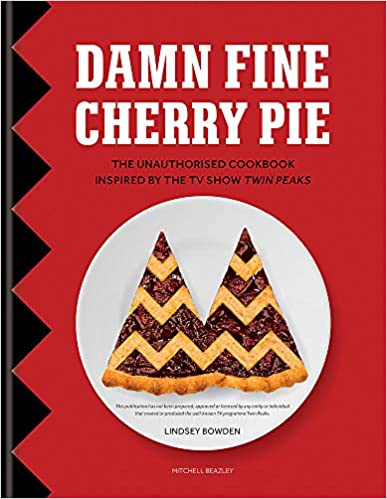 “Food is interesting. For instance, why do we need to eat?” questions the aphorism guru The Log Lady before providing an in-depth consideration of edible ethics.
“Food is interesting. For instance, why do we need to eat?” questions the aphorism guru The Log Lady before providing an in-depth consideration of edible ethics.
So here, for you to digest, are a plethora of dishes inspired by David Lynch’s Twin Peaks (Population 51,201, although that varies).
Food is an integral part of many films but is particularly important in television series where diners, restaurants, pubs, bars, cafes and coffee shops are often central to character and plot development as much as food and its preparation. The quirky, surreal and occasionally bizarre TV 1990s drama Twin Peaks was no exception and a multitude of dishes, delicacies and general foodie oddness stretched across the series. Coffee was integral, especially for FBI Special Agent Dale Cooper who could often discuss the coffee served: “You know, this is – excuse me – a damn fine cup of coffee,” and his preference for a brew that is “black as midnight on a moonless night,” to the extent that canned Georgia Coffee in Japan even had its own great Twin Peaks adverts that tied in with the series in its own very distinct way. And then, of course, there are the cherry pies. Indeed the basis of the title of this cookery book, coupled with its delightful cover illustration, depicts Twin Peaks as slices of pie.
Before starting, there are a couple of points to mention. This publication has not been prepared, approved or licensed by any entity or individual that created or produced the TV programme. It also is focussed on the Twin Peaks world of the original series and Fire Walk With Me film rather than the series filmed and set 25 year later that reassembled the location, characters and crew to offer new directions and dimensions. This is, however, not a problem in any way and gives the original series, and its cuisine, a welcome exploration.
Damn Fine Cherry Pie – Recipes Inspired by Twin Peaks does not hold back on the number and diversity of recipes on offer so there is something for everyone. Indeed, as the title would suggest, “They’ve got a cherry pie there that’ll kill ya.” There are two such recipes to choose from – the Shelly Johnson version or a useful vegan pie from Norma Jennings. But there is more to enjoy aside from the cooking as there are a number of other excursions into the world of Twin Peaks you can engage with, from quizzes, origami and even a Ludo game. If planning a Peaks party there are fashion and costume options to ensure that you look the part at any gathering and also, should you have more seductive foodie Peaky plans, you can (practice required) learn to tie a knot a cherry stalk like Audrey Horne.
“This must be where pies go when they die,” is one of the show’s many memorable quotes and fortunately there’s an interesting tasty Blueberry Whoopie Pie on offer with helpful owl themed design for that dessert. There are many sweet foods on offer, so varieties of donut imbue the pages – including Coffee Donuts. Then there’s the mix of sweet and savoury that can’t be beaten when making Maple Ham Pancakes: “Nothing beats the taste sensation when maple syrup collides with ham.” For Scandinavian food fans (or guests at the Great Northern hotel) there are recipes for Icelandic Hangikjot and Norwegian Meatballs and Gravy. But do remember there are rules to abide amidst all this culinary joy; “never drink coffee that has been anywhere near a fish.” Wise words, perhaps, although you’ll be pleased to know there is an extremely tasty looking trout based Percolator Fish Supper here, which sounds ideal with its bourbon, garlic butter and lemon. We would contend that you should never eat fish that has been anywhere near coffee, but that could well be personal preference.
The recipes are all related to characters, events and environments in the series. Overall it’s a fun foodie folio that offers a lot to create and eat but also provides perspectives for Twin Peaks gatherings as well as the desire to re-watch (or watch if you’ve never experienced it before) a television classic of murder, mystery and distinct surrealism. Recommended both for daily meals and, particularly, for those Twin Peaks parties you know you always wanted to have or just a good old-fashioned series binge watch. With a damn fine cup of coffee of course. And perhaps a slice of cherry pie. Or two.

Film Review: What’s Cooking? (2000)

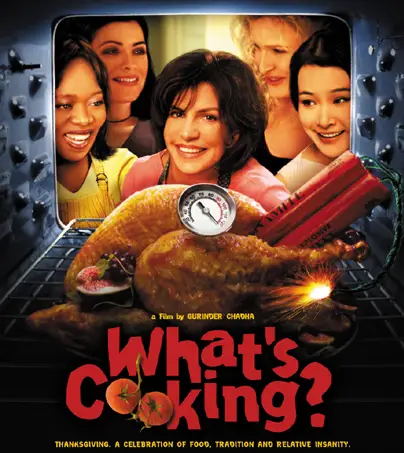
Writer/Director: Gurinder Chadha
Country: US/UK
Cuisine: Multiple
Film Rating: 7/10
Foodie Rating: 8/10
Gurinder Chadha is fond of depicting meals in her films, to the extent that many of them feature food in the titles. From her early feature Bhaji on the Beach (1993) and as a writer with The Mistress of Spices (2005), food is an inherent part of the lives of the protagonists and their communities: from Bend It Like Beckham (2002), whose tagline even emphasises the food – “Who wants to cook Aloo Gobi when you can bend a ball like Beckham?” – to the celebratory wedding and betrothal musical Bride and Prejudice (2004). In What’s Cooking? the food on offer is being prepared within a Los Angeles neighbourhood where families, their friends and acquaintances gather together to celebrate Thanksgiving. Being a Gurinder Chadha film, the many cross-cultural aspects of her characters are brought to the fore as well as their individual ideological and personal desires which create conflict, romance, misunderstandings and humour. And What’s Cooking? embraces all these elements with its depiction of celebrations with a large variety of cultural cuisines expected by all and sundry (as well as a KFC bargain bucket to mitigate a cooking disaster) so the titular question is distinctively accurate.
With any feast, ingredients need to be purchased, prepared and cooked in the kitchen ready for consumption at the family feast. And in this way the film covers the whole process from conception and preparation to serving and eating, from starters to desserts with accompanying beverages for its ravenous protagonists. But this isn’t just about the food. Each family’s meal may be central to their day but families are complicated and have all sorts of issues to deal with. And they aren’t just cultural, they are also inter-generational. What’s Cooking also refers to the family problems and secrets that are all building up and may well be revealed before the day is through – whether it’s an estranged husband who has been invited to the family’s celebration not knowing that his former wife’s new boyfriend will also be joining them; a couple who have problems with their children – their youngest son is hiding a gun and their eldest has lied that he cannot attend this year due to college work but has secretly joined his girlfriend’s family across the road; elderly parents coming to terms with their daughter’s lesbian lover; a wife dealing with an interfering mother in law in the context of a family row over the son’s desire to choose his future.
What’s Cooking? is a true smorgasbord of both food and culture in that each family has a different heritage and, as such, the food being prepared reflects their traditional cuisine within the context of the quintessential American holiday of Thanksgiving. The ‘prepare and eat’ element, whilst mouth-watering, really forms the background of the narrative; it is the characters, with their desires, their problems and their conflicts that add the spice to proceedings. Relationships, particularly those between family members, are complex and What’s Cooking? opens the lid of the cooking pot to reveal the contents where tensions are simmering and could reach boiling point at any time.
At turns funny, sweet, confrontational, sad and occasionally poignant, What’s Cooking? is a film with food and family firmly at its heart.
You can buy the film here in the UK and here in the US.
If you click the link and decide to make a purchase we will earn a small commission, at no cost to you, which helps towards running this site.

VTW Go Finland and Meet Leningrad Cowboys
They’ve been to America (Leningrad Cowboys Go America (1989)) and they’ve met Moses (Leningrad Cowboys Meet Moses (1994)) so VTW Go Finland is perhaps an appropriate foodie film excursion. Those curious about the Leningrad Cowboys band and their work with legendary low-key Finnish filmmaker Aki Kaurismäki should check out the review here before purchasing their cinematic output, including videos, for your education and pleasure.
While the band, instantly identifiable by their outrageously long and pointy quiff hairstyles and black winkle-picker shoes, have played gigs all over the world, one of their enterprises in Helsinki involves food and it is totally in tune (or out of tune depending on the gig in play!) with their unique musical style. Among their musical and lyrical thematic tendencies there are influences of vodka and tractors, both of which are also intrinsic their food.
Many years ago there used to be a Leningrad Cowboys Restaurant which had bonkers décor and a confusion of fusion menu that clashed cuisines from all over the world – where American assimilated with Asian, Mexican merged with Moroccan and Indian integrated with Italian – a broad range of flavours that shouldn’t have worked in so many ways but really, really did. It was there that we also discovered the joys of vanilla vodka straight out of the freezer. Quaffing Finnish spirits while sitting next to quiffing statues, who needs a pudding when you can combine your dessert and digestif in a scrumptious shot? We just had to make sure we could find our way back to the hotel at the end of the evening…
Sadly, it no longer seems to be there – we looked out for it on a recent trip to Helsinki – which is a shame.
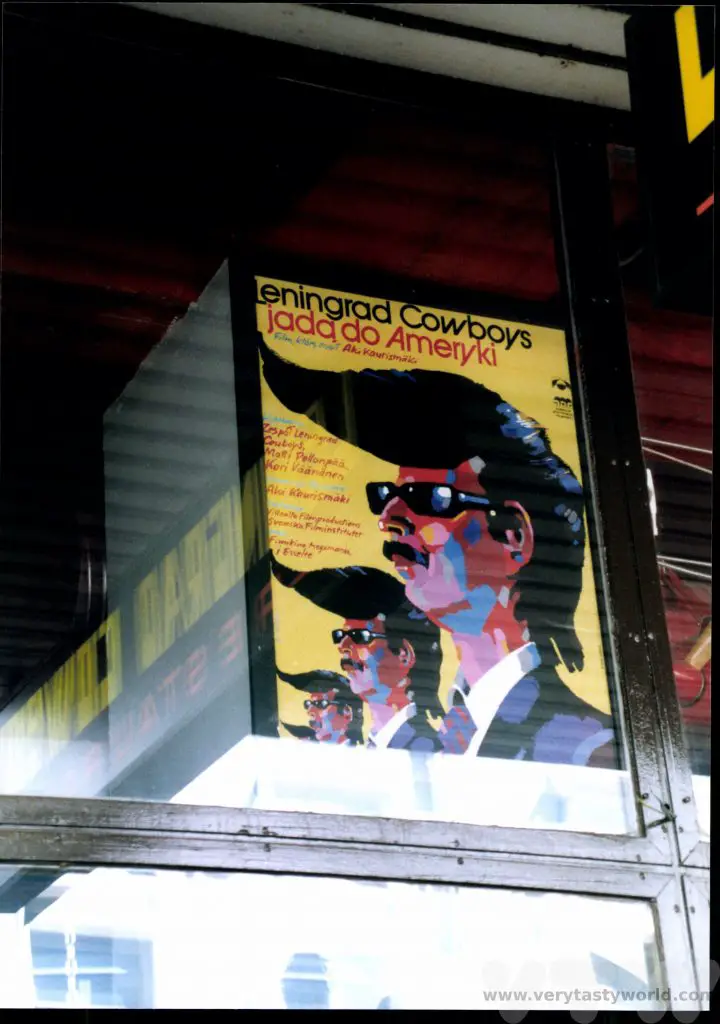
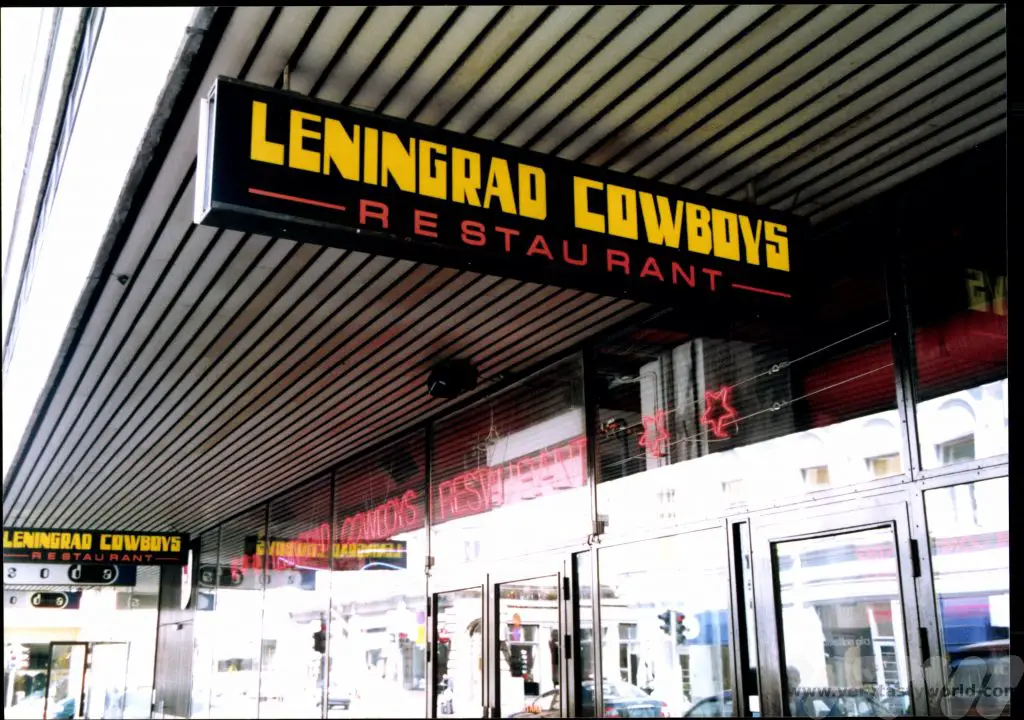
However, the Zetor Restaurant in Helsinki has been around for many years and continues to thrive. It takes its name from the leading Czech tractor brand – “The first zetor tractor, the Z25, was ‘baptised’ on 15 March 1946,” according to the official website – and takes the tractor-restaurant concept to a wonderful and surreal zenith. Yes, you eat your meal…. on a tractor or sitting around a tractor.

Zetor Restaurant is owned by Aki Kaurismäki and designed by one of the Leningrad Cowboys. Rural kitsch bliss. Zetor declares itself to be a “110% Finnish restaurant,” and who are we to argue? Also, as is befitting a classy restaurant, the fare on offer comprises signature dishes from their very own recipes and these are described in a highly distinctive manner: perhaps Oula’s sautéed reindeer, The Cackle of Kaivopiha, The weather may change but the vendace stays the same or Karelian glory, which they claim is ‘close to deserving a place on UNESCO’s heritage list.’
It’s worth noting that Crazy reindeer from Levi, Lapland, Mummy’s boy’s meatballs and Grilled liver all contain alcohol. The essential on offer is the drool-worthy Tractor Man’s steak: ‘Tender sirloin of beef, bacon baked on the bonnet of a Zetor tractor with honest garlic butter as fuel. As well as country potatoes with smoked garlic mayonnaise, mousse of smoked reindeer and vegetables as eye candy. That smoked reindeer is welcome as more than eye candy.’
Don’t forget the drinks, which include a wide variety of strong Finnish berry wines: Lingonberry 21 %, Cranberry 21 %, Blueberry 21 %, Blackcurrant 21 %, Sea Buckthorn 21 %, Cloudberry 15 %.
Something to take a shot at. Or two.
